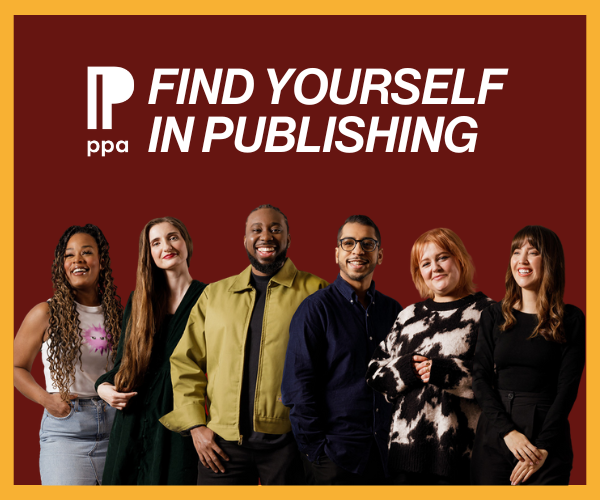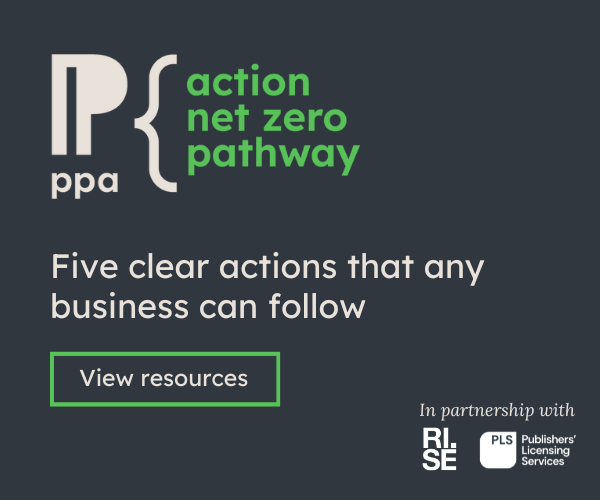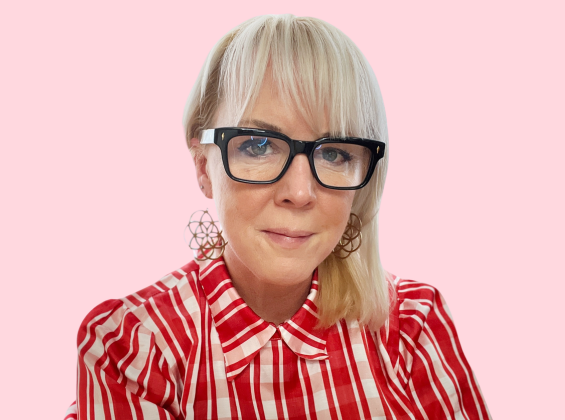What is a radar? Simply put, it’s a system that detects the presence, direction, distance and speed of objects. Detection allows for preparation and in turn prevention and protection. A radar helps to contextualise where you are within the grand scheme of things. Whether it’s the weather formations or the terrain around you, alien objects or unexpected missiles hurtling towards you, a radar gives you the foresight to avert a crisis.
However, no matter how alert you were a year ago, nothing could prepare you for the coronavirus crisis. On 27th January 2020, our radars were flickering with warning signals as Wuhan went into lockdown. Exactly a year later and our instinct to predict, prevent and protect has been shaken to the core. So what is on your radar now? How are you preparing to protect and futureproof?
As the body that represents UK magazine and business media, what is on our radar and how will we be helping you over the course of the coming year?

Owen Meredith, PPA CEO: "Who can believe it’s February next week? Time flies when you’re in lockdown! Here at PPA HQ, we’ve already got 2021 off to a flying start, building on the collaboration and success of last year.
"We continue to respond to the pandemic with efforts to support the industry, including lobbying for business rate relief, an advertising tax credit, and event cancellation insurance – the Chancellor’s Budget on March 3 is the one to watch. On the horizon we are expecting the government to introduce new legislation to counter Online Harms and a new competition regime and Code of Conduct for tech platforms like Google and Facebook, governing their relationship with publishers. Both these pieces of legislation will have a huge impact on PPA members.
"I am also looking forward to the Spring, when we expect to be able to report the results of the very first industry wide diversity survey. The survey will provide a view across the whole publishing industry, with the data and insight needed to tackle challenges and make progress in this important area.
"There’s no doubt 2020 was challenging for all of us, but there’s a lot to be positive about too. From the success of subscriptions, to growing digital audiences and new revenues from online events and ecommerce. There has been radical and rapid transformation across the industry and with trusted content at the heart of what PPA members do, I look forward with optimism."
HEALTHCARE REPORTING
With the news and clinical guidance constantly changing on a very quick basis, the newsrooms of healthcare publications are busier than ever breaking stories and holding the government to account. But with their readers working on the frontline, already overwhelmed with the realities of COVID-19, how can healthcare journalism strike a balance between COVID content and more perennial challenges?

Beth Kennedy, Editor, Chemist & Druggist: "The year ahead promises to be just as unpredictable and challenging for healthcare journalists as 2020 was. The upside of 2021 compared to last year is that we’re all a lot better equipped to deal with the uncertainties and stresses of working through a pandemic, making it a lot easier to plan ahead. On the other hand, it is likely that even our best laid plans for the next few months will have to change considerably by the time they come to fruition given the constantly changing nature of the COVID-19 situation. But we’re well practised in this now; 2020 saw us having to completely redraw our entire editorial strategy on the trot, so my team is now much better at rolling out new projects at a moment’s notice.
"The challenge for healthcare journalism especially will be finding the balance between keeping readers updated on the latest COVID-19 developments without overwhelming them. Given that C+D’s readers spend their entire working lives dealing with fallout from the pandemic and the worry of catching COVID-19 themselves, it will be important to offer content on other important issues as well, so our readers know that we haven’t forgotten about perennial challenges such as funding because of the pandemic.
"The future of the pandemic will likely hinge on the success of the COVID-19 vaccination rollout. As supply issues and logistical challenges become clearer, it should become easier to predict when we will be able to get life back to a semblance of normality."
DATA JOURNALISM
Over the past year the news cycle has consisted of depressing statistics and ominous graphs charting the growth of the pandemic. Data journalists have been central in turning these numbers into something digestible and meaningful. A number of news outlets were recognised by Press Gazette for their data journalism over the course of COVID-19, namely PPA member The Economist. Helen Atkinson, a member of their award-winning data journalist team, explains how prediction-modelling is on The Economist’s radar in 2021. Reporting on something that has not yet happened is complex and requires a methodical approach which you can read all about below.

Helen Atkinson, Visual Data Journalist, The Economist: "During 2020 we found ourselves in a unique position as a data team within a newsroom. Firstly, we became an integral part of The Economist’s reporting on the Covid-19 pandemic, then we had quite a volatile US election. Both of which were rapidly changing and uncertain situations, with many different angles to approach them from. We found out how important it was to not only report on what has happened, but create more forward-thinking pieces.
“For data journalism, one way to do that is with prediction modelling–something we are definitely taking into 2021 with us. We have already got ideas for how we can use data to look at what might happen in the future, at various stages of development–but they’re very complex so we have to have a very high benchmark for what qualifies. For example, the methodology piece for our US election model explains the work that went into predicting who would win the 2020 presidential election. As we tend to build our bigger data projects with more of a “digital first” mindset, it will be interesting to see how we develop our ability to integrate both our digital and print products, and create content that is of an equally high standard on both."
It is unsurprising that a recent MediaPost report found that of all the global media usage in 2020, 35% of it was made up of consumer-driven media, particularly digital video, audio, gaming and social media.
One of the most central players in increased media engagement over the last few years has been TikTok, one of the fastest growing social media platforms in the world. Despite only launching in September 2016, recent statistics show that users spend nearly 500 minutes per month on the app, it has the highest social media engagement rates per post, and it is the most downloaded App on the IOS App Store having been downloaded over 2 billion times. No wonder Head of Social Strategy at Hearst is looking to this short form video platform to build and engage communities. Are you making the most of social channels with unique access to unique audiences? And how clued up are you on the way Facebook News will impact you as a publisher?

Lauren Smith, Head of Social Strategy, Hearst: “I’m keen to see how the launch of Facebook News impacts publishers – we are part of the initial scheme launching in January and I’m excited to see what kind of content gets pickup.
“2021 will definitely be about short form video: we’ll be experimenting more with TikTok as we continue to see growth and build engaged communities on the platform, and with Reels on Instagram, which has become more prominent in the app and is huge for our health brands in particular.
"Like many media companies, we saw a huge increase in ecommerce revenue from social in 2020, so we’ll be monitoring how the trends in purchasing change this year, and whether it’s the same products converting. I’ll also be interested in how standalone virtual events evolve when we start to return to ‘normality’”.
INDEPENDENT PUBLISHING
Don’t just look inwards. Look outwards. Speak to other publishers in other markets and you’ll soon see that the picture is not as bleak as you once thought. We have adapted and proved our agility as an industry, and as a result 2021 will see us reap the rewards of accelerated innovation and cost savings.

Hugh Comerford, Managing Director, The Stage & The Bookseller: “Having a foot in two markets I’m reminded that things are never all bad. While on the face of it one market may be more impacted by COVID than another we’ve had growing subscriptions in both sectors and virtual events have enjoyed success. Many smaller publishers have been challenged by the downturn in recruitment advertising but amazing teams and inspirational leadership mean that many will survive and come out stronger, but not all.
“I’ve talked to publishers in other fields, particularly in travel (not a great place to be right now) and it’s so uplifting to see ingenuity and determination win through. Good relationships with key accounts have helped some publishers keep going even when that big earning event had to be cancelled at the last minute. I’ve heard of sponsors suggesting the organiser hang on to the funds until the next time or apply it to something else. You can’t beat relationships like that.
“It’s also a time when suppliers can show they really are your partner by offering better terms or discounts. I’ve encountered several examples of this.
“My prediction for 2021? Cost savings last year will of course reap greater benefits in a full year; so even without much revenue recovery it should be a better year. Ultimately it will show whether you did enough to change in 2020.”
CORONAVIRUS INNOVATION
Our feet were flat to the floor on the innovation accelerator over 2020 and none more so than The Big Issue, the magazine that before the pandemic, relied on sales by their street vendors across the UK. As soon as the first lockdown hit, The Big Issue were forced to pivot their business model and as a result have emerged stronger. What does 2021 entail for them?
*Paul McNamee, UK Editor, The Big Issue: *"Covid hammered The Big Issue. We went from a sustainable business that delivered social change and served our readers and vendors, to facing an existential threat to our future.
The energy and resilience of so many people within The Big Issue through 2020 helped us reinvent – moving to a subs-led business in first period off the street; selling through traditional retail for the first time; building an app; developing our lagging digital presence at a pace; helping vendors accelerate move to cashless payments when they returned. And so much more.
"As Covid continues to dominate, we continue to innovate. We turn 30 in the autumn. We have plans to mark that milestone.
We’re growing our digital presence. We’re working on RORA, a major initiative to help keep people in jobs and in their homes. We’re going to extend the brand into Ebike provision and, through The Big Exchange, into ethically minded investments.
"At our heart, the magazine will develop, grow and provide a means for the most vulnerable in society to build their own futures."
EVENTS
Our radars at the start of every year are normally dictated by the “known unknowns.” The trends that are more than likely to unfold in some way, shape or form and can be predicted and planned for, leaving leeway for the ebb and flow of crisis. But as Events MD of Incisive Media explains, 2020 event portfolios played out against a backdrop of “unknown unknowns.” We are therefore craving certainty wherever it can be found, which Simone argues should be a key focus for your 2021 events planning. Provide your customers and clients with certainty, embrace your flexibility as an events professional and the acceleration that COVID has facilitated.

Simone Broadhurst, Events MD at Incisive Media: “Firstly, deliver certainty – your clients and customers crave this and they crave it now, so make sure you are solving their problems, not adding to them. Of course, this means digital for now and while a 100% focus in this way for many clients is not their ideal, it will at least mean they can deliver a plan that will, in turn, help them pass on certainty around their own business. And of course, if done well you're creating new customer data too. A win, win.
“Secondly, remain flexible, which to some degree is what comes easily to business media and events professionals. You've all launched events in next to no time when needed in the past, so what's different now? Keep your flexibility and ensure you know your clients and customers can see this too. Then, if you have a 'digital to hybrid to physical' plan in place, all you need to do is keep an eye on what the government say and do and you can deploy your plan to suit. Everyone will have different trigger points for their move from digital to physical, but the real winners are the ones who will get the timing right. Maximising digital while not missing the surge of pent up demand which we all know will engulf us at some stage.
"Last but not least, this mass creativity against a digital backdrop has fuelled thinking in organic conference growth. Incisive Media alone has 10 new conference launches planned for this year. These are products that can travel further, faster and be more cost effective, so let's not waste this opportunity provided by the COVID accelerator, to refocus and reinvent our businesses."
UK ADVERTISING
Good news! Scrap that… Great news! This week the Advertising Association (AA) published the latest AA/WARC Expenditure Report and the forecast seems to be far sunnier than the bleak days of 2020. The report expects the UK’s ad market to grow by 15.2% this year, making up for 2020’s decline. While it is often easy to look no further than the damage on your door step, the report estimates that the decline of the UK’s ad market during 2020 was in fact softer than the global rate and the rest of Europe. You can read about the full report here and rest easy in the knowledge that the Editor-in-Chief of Campaign predicts a similar rebound in 2021. There is light at the end of the tunnel but still multiple issues to be tackled.

Gideon Spanier, Editor-in-Chief, Campaign, Haymarket Media:“Advertising is set to recover strongly in 2021 and the rebound could more than make up for last year’s coronavirus slump.
"The resilience of the ad market has confounded forecasters as expenditure held up better than expected in the second half of 2020, thanks to big increases in media consumption and ecommerce.
"Ad spend fell only 8% last year and is set to jump 15% this year, according to research firm Warc, which credits the UK’s advanced digital economy. Every major media sector, including magazine brands, should enjoy double-digit percentage increases in ad revenue.
“Beyond the pandemic, the industry must tackle multiple issues:
• Digital disruption is forcing legacy companies to restructure. Some big agency groups are merging subsidiaries, which has created space for a wave of nimbler agency start-ups.
• Diversity and inclusion have shot up the agenda because of Black Lives Matter. Unilever is vowing to improve ethnic representation in its ads and Boots made diversity of agency staff a scoring criterion on its recent account review.
• Regulation is also on the rise, with online harms, real-time bidding and foods high in fat, salt or sugar facing new curbs.
“All this comes as ad-free services such as Netflix and Disney+ gain traction. The ad industry must be more inventive and respectful to engage consumers.”
MARKETING & CONSUMER MAGAZINES
In a recent article, the CEO of Magnetic Media reflected on how the past year has reinforced the importance of magazines as passion-based content providers. Not only have magazines provided us with escape from screen time but have informed and given us ways to engage with our new passions and habits. Demand for online magazine content is high, you have the reader’s attention so media campaigns should be maximising on this, keeping those four P's in mind: Passions, Positivity, Purpose and Propensity to spend.

Sue Todd, CEO, Magnetic Media:"I am personally very excited to see what publishers and brands can achieve together in 2021. Activism and changing the world for the better one step at a time feels like an important role for us all and I'm certain we'll be better off 12 months from now.
"If the forecasters are to be believed, then at some point in 2021 – into 2022 at least – we are heading for our generation's equivalent of the 'Roaring Twenties.' We will certainly see a lift in the public mood, and it will be those sections of the population with the most optimistic outlook and greatest financial resilience that will be spending the hardest. We know from previous research from Hearst and Immediate, how well magazine consumers index on spending power and we also know how positivity boosts key metrics like favourability and consideration. Look out for more from publishers this year on how we believe 'the great unlocking' will affect behaviour and spending.
"I also predict that in 2021 we will see a continued thirst for passion-based content and increased spend on our interests. An uptick in demand for online magazine content and subscriptions through 2020 is a key indicator of people seeking to engage with their passions through magazine brands and looks set to continue in 2021. So, for 2021 consider hard the four P's when planning your media campaign: Passions, Positivity, Purpose and of course, who has the Propensity to spend."
SUBSCRIPTIONS
Publishers found that surges in subscriptions over lockdown somewhat made up for the loss of newsstand sales. The reader revenue trend, which had begun before 2020, has been accelerating upwards for the past year, kickstarting pivots to subscriber-based business models. According to a study by the AOP and Deloitte, digital publishers' subscription revenues were up by 20% in the first three months of 2020. So how do you maintain this momentum and retain a new base of subscribers while fighting against lockdown fatigue? Could a membership model be the way forward? Are you maximising on this uniquely strong consumer demand?

Helen Ward, Subscriptions Director, Immediate Media: "There are two key aspects I’m interested in seeing unfold in 2021 across the publishing industry. The first is the increased demand that we’ve all been seeing for subscriptions and how long that will continue and what level of investment and amplified marketing companies are implementing to benefit from this. For Immediate Media we see this as a key time to keep up our expanded marketing activity and spend whilst we’re seeing such strong consumer demand.
"The second aspect is customer retention, engagement and lifecycle. With the additional subscribers that publishers have acquired over the past 10 months it will be interesting to see what initiatives are undertaken to try and keep them. I’m already seeing enhanced subscriptions packages and memberships being launched and offered which shows encouraging signs that publishers are thinking much longer term and strategically about subscriptions. At Immediate Media we’ve seen significant growth in our subscriber file so we’re already working on plans across this area to look at increased marketing to our new and existing subscribers and to help with renewals and churn prevention."
THE INDIE MAGAZINES
When asked for his 2021 predictions, Jeremy Leslie, Founder & Creative Director of MagCulture injected some positivity into the mix. In fact, it seems that the side effects of lockdown – zoom fatigue, political chaos and time to stop and think – have played nicely into the hands of what an indie magazine offers: a printed product offering fresh perspectives and truth.

Jeremy Leslie, Creative Director & Founder of MagCulture: "The past year of lockdown has had little detrimental effect on the indie scene; the enthusiasm for launching and producing magazines remains matched by an audience hungry for new reading material. I can only see that continuing in 2021, and the first week’s support that.
"There are frustrations for our part of the industry; our customers can’t visit our shop to browse, and there have been delays in new issues arriving from the EU. Our conferences and events have all gone online. But you find ways round these problems. Our events are currently making the most of the reach Instagram Live and Zoom provide.
"More broadly, I think everything we’re going through supports the creativity, ambition and growth of the independent magazine format: additional screen time means we want more, better print; ongoing political turmoil supports the security of printed truth; and the opportunity to question everything we took for granted encourages readers to seek fresh thinking."



















